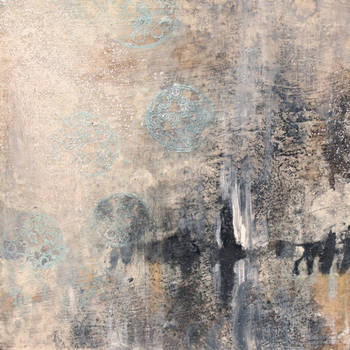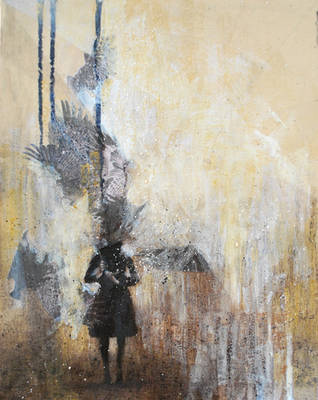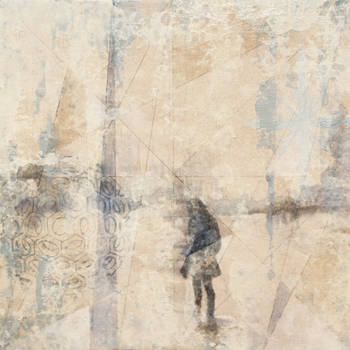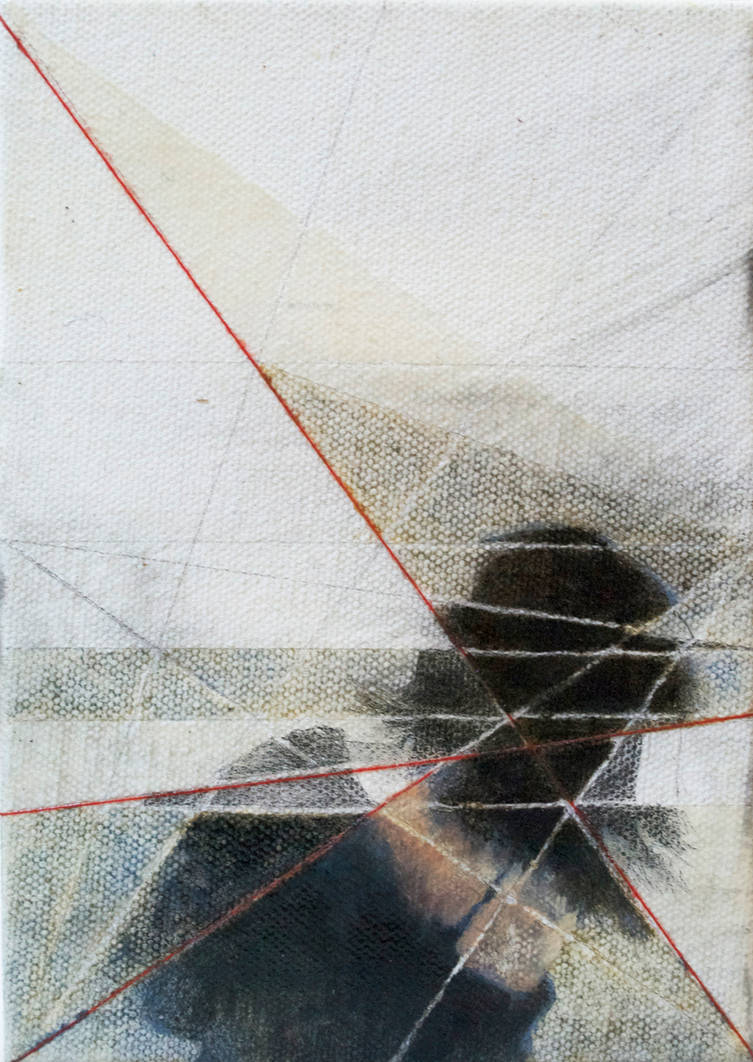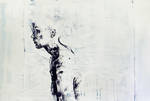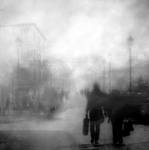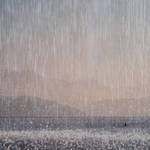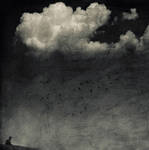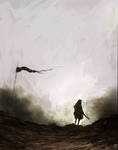> Please introduce yourself, in your own words. What are your interests?
Hi, I'm Jen! Thank-you so much for featuring me. Aside from being interested in art, I like urban street fashion and trespassing in abandoned buildings to check out graffiti. I'm thrilled by spontaneous adventures, eating good food, and reading!
> Where did you begin with artistic endeavours? How did you come across Abstraction or Surrealism?
I took my first painting class during my third year of college and fell in love with it. I was originally an illustration major and mainly did a lot of realistic drawing and figure studies. With painting, I felt that I was able to be more expressive. Instead of focusing on drawing minute details, I was able to "loosen" up by learning to paint shapes. I began incorporating abstraction and surrealism in my work during my last two semesters of college. I took a mixed media class, which forced me to step out of my comfort zone and boundaries as a traditional artist and challenged me to be more experimental. I grew to enjoy it, which lead me to figuring out a way to combine all the traditional techniques that I learned to find a middle ground between abstraction and realism.
> How would you explain the concept of Abstraction or Surrealism to someone with no experience with the genre?
Abstraction is reducing a tangible subject into its minimal form, to where it becomes intangible. The viewer no longer interprets the subject as a specific object. The outcome is a heavily distorted or an exaggerated image; sometimes emphasizing a mash-up of colours, lines, shapes, etcetera. Abstract work is often misunderstood along the lines of "my 5 year old can do that" - however, to a serious artist, much thought actually goes into creating an abstract piece. Surrealism, meanwhile, is an unusual juxtaposition of any variety of subjects or landscapes that creates a fantasy, dream-like, quality. Surreal pieces often reflect a state of mind or something otherwise imagined.
> What inspires you to use Abstraction or Surrealism in your work?
I enjoy the experimental aspect of both abstraction and surrealism. I love the process of creating a realistic portrait with "in progress" marks. Playing with the "real" vs the "unreal" is fascinating. By combining abstract, surreal, and realistic elements in my paintings, I feel that I am able to communicate, more clearly and expressively, difficult concepts and emotions.
> What do you want to express with your artwork? What is the idea you're trying to put across?
The ultimate goal of my work is to communicate the hope found only in Jesus Christ. To me, he is real and alive. He died and rose again to save us from sin and reconcile us to God. My dark paintings express hard emotions: sadness, isolation, anguish, disintegration, desolation, and desperation. I am communicating my own experiences and struggles while relating to passages in the bible that I am reading and studying. My work is also personal to me, so I attempt to be as transparent and authentic as I can.
> What are your 'tools of the trade'? How do you create your art?
I use graphite, charcoal, and oils. After designing a geometric grid, I start off a piece by creating a contour under-drawing with pencil. Next I shade in shadow shapes with charcoal and seal it in place with medium. Once that groundwork is finished, my tedious glazing progress begins. I use many transparent layers of oil as if it's watercolour, working from light to dark. Depending on the time I have to work, my pieces range from five to over twenty layers of colour.
> Do you think the quality of a piece depends more upon technical perfection, or the message contained therein?
I believe that a good quality piece conveys the message with technical perfection. In my opinion, nothing is worse than having a great concept with poor execution, or vice-versa; great technical skill but an unclear concept. A good piece should have both.
> Who are your favourite visual artists, and why?
That's a tough one... I admire Monet, Picasso, Andrew Wyeth, and Jeremy Geddes. Monet's expressive colour palette and brush-work is inspiring as well as Picasso's concepts and cubist paintings. I enjoy the moodiness of Wyeth's quiet work the and isolated figures within. Finally, Jeremy Geddes is my favourite contemporary artist. His hyper-realistic technique and surreal compositions are amazing and well-produced. Personally, I love the aesthetic of each of these artists and I attempt to incorporate those bits and pieces into my own work.
> Which dA Groups would you recommend to someone looking to get involved with abstract and surreal art?
> What advice would you give to an absolute beginner in the genre?
Study art history and research old master artists. Study how the abstract movement came to be and what artists were influential during that time period. Also, keep up to date on contemporary artists. Learn fundamental drawing and painting techniques first, before jumping in to the "type" of art you would like to do especially if it's illustration. It's extremely beneficial. You can't break the rules if you don't know what they are.
> Any final words on abstract and surreal art?
-
> In conclusion, pick nine works from your Favourites that you particularly enjoy.


